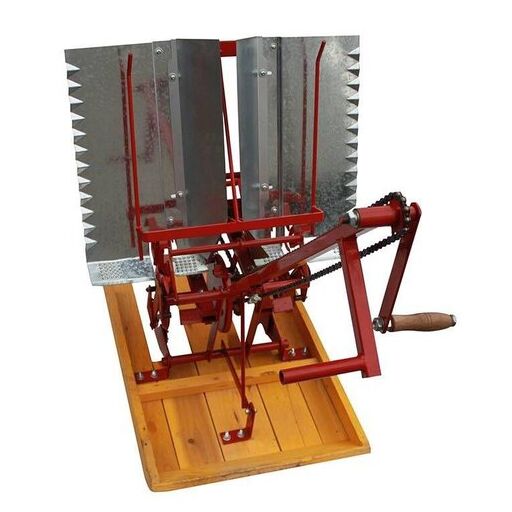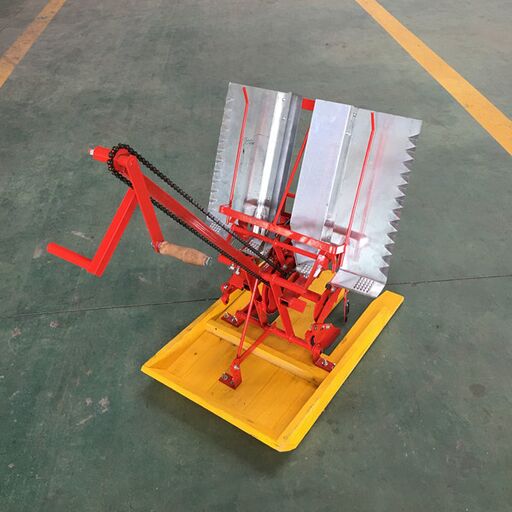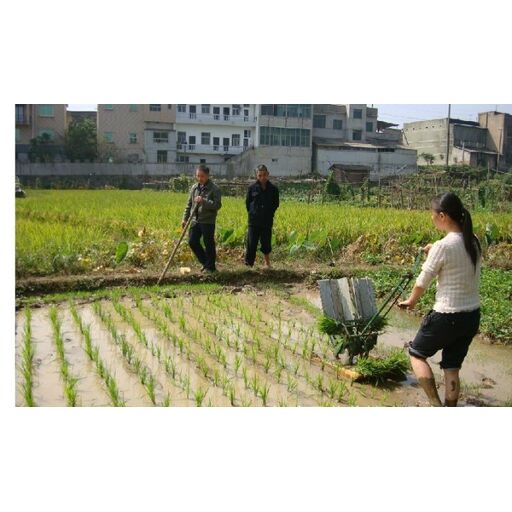Advance Quality Two Row Rice Transplanter
Description
Introducing the Advance Quality Two Row Rice Transplanter: Enhancing Efficiency and Precision in Rice Planting
Are you tired of the labor-intensive and time-consuming process of manually transplanting rice seedlings? Look no further than our Advance Quality Two Row Rice Transplanter, designed to revolutionize the way you plant rice.
With its cutting-edge technology and advanced features, this transplanter ensures maximum efficiency and precision, saving you valuable time and effort. Say goodbye to back-breaking work and hello to a streamlined planting process.
Key Features:
Dual Row Capability: Our transplanter is equipped with two rows, allowing you to plant twice as much rice in a single pass. This feature significantly reduces planting time, enabling you to cover larger areas in a shorter period.
, Adjustable Planting Depth: Achieve optimal planting depth with ease. Our transplanter offers adjustable settings, ensuring that each seedling is planted at the perfect depth for optimal growth and yield.
, Uniform Plant Spacing: Say goodbye to unevenly spaced seedlings. Our transplanter guarantees uniform plant spacing, resulting in consistent growth and improved crop quality. This feature also facilitates easier weed control and maintenance.
, Ergonomic Design: We understand the importance of user comfort. Our transplanter is ergonomically designed, reducing operator fatigue and promoting a more enjoyable planting experience. Its user-friendly controls and adjustable handles make it suitable for operators of all heights.
, Durable Construction: Built to withstand the rigors of the field, our transplanter is constructed using high-quality materials. Its robust design ensures long-lasting performance, even in challenging environments.
, Easy Maintenance: We value your time, which is why our transplanter is designed for easy maintenance. With accessible parts and straightforward cleaning procedures, you can keep your equipment in top condition without hassle.
Why Choose the Advance Quality Two Row Rice Transplanter?
Increased Productivity: By reducing planting time and improving efficiency, our transplanter allows you to accomplish more in less time. This translates to increased productivity and higher yields.
, Cost Savings: With its ability to cover larger areas and reduce labor requirements, our transplanter helps you save on labor costs. Additionally, its durable construction minimizes the need for frequent repairs or replacements.
, Enhanced Crop Quality: The precise planting depth and uniform plant spacing provided by our transplanter contribute to improved crop quality. Expect healthier plants, higher yields, and better overall harvests.
, Sustainable Farming: Our transplanter promotes sustainable farming practices by reducing the need for excessive manual labor and minimizing seedling wastage. This eco-friendly approach benefits both the environment and your bottom line.
Invest in the Advance Quality Two Row Rice Transplanter today and experience a new level of efficiency and precision in rice planting. Streamline your operations, increase productivity, and achieve superior crop quality. Don't settle for outdated methods when you can embrace the future of rice farming.
Features
Reviews
No reviews found








